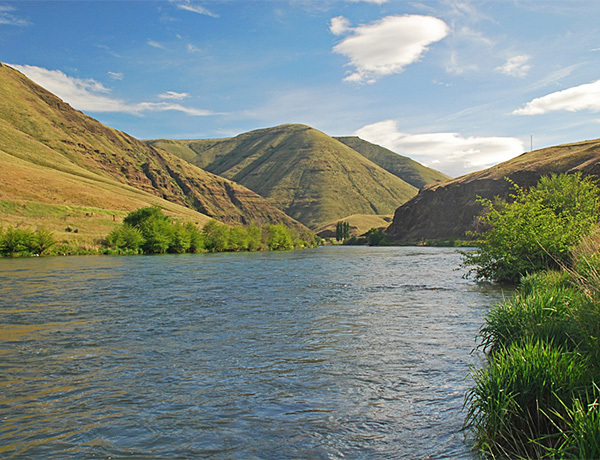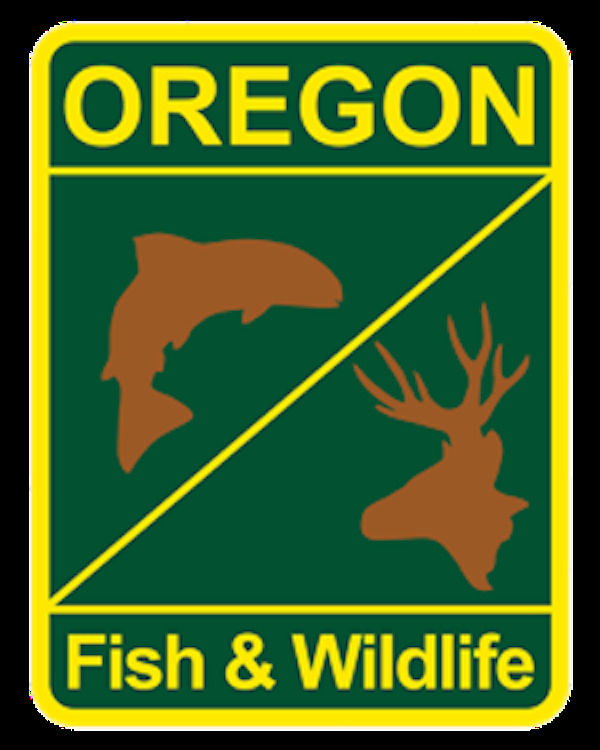Fish Report for 8-18-2023
Deschutes, Umatilla to remain open to steelhead fishing this fall John Day, Grand Ronde, Imnaha also likely to be open

by OR Department of Fish & Wildlife Staff
8-18-2023
Website
THE DALLES, Ore.— One of the most popular rivers to fish in the West, the Deschutes River will remain open for steelhead fishing this fall, as enough unmarked steelhead have passed Bonneville Dam.
As of Aug. 15, 24,151 unmarked summer steelhead have passed Bonneville Dam since July 1. At least 23,100 needed to pass between July 1-Aug. 31 to keep the Deschutes River open past Sept. 14.
The John Day River is likely to be open for hatchery summer steelhead this fall as fishery managers predict the river will meet its threshold of 26,000 unmarked steelhead passing Bonneville between July 1-Aug. 31. Most returns to the John Day are natural origin steelhead and recreational fishing is meant to target hatchery strays before they spawn. Check the permanent regulations for season dates.
Historic data shows a strong statistical correlation between passage at Bonneville Dam and abundance in tributaries like the Deschutes and John Day. Above these threshold numbers, populations are abundant enough to not be at risk from fishing pressure. (Anglers must release unmarked steelhead but there is some mortality from catch-and-release fishing.)
The Umatilla River also remains open to hatchery steelhead fishing this fall and the fishery also targets hatchery strays. However, the Walla Walla steelhead fishing closure will continue as the river has been below the Critical Abundance Threshold for the past 4-5 years. Beginning in 2024, the Walla Walla will be closed under permanent regulations.
Portions of the Imnaha and Grande Ronde will also be open to hatchery steelhead Sept. 1-Dec. 31 per permanent regulations.
Wild upriver summer steelhead are destined for areas throughout the Columbia and Snake River basins (including the Deschutes, John Day, Umatilla and Grande Ronde rivers). They enter freshwater from May through October and pass above Bonneville Dam starting in July. Unlike winter steelhead, they take several months to mature and don't spawn until the following spring. Returns to the Columbia and Snake River basins have been poor for seven years running now.
As of Aug. 15, this year's upriver summer steelhead run to the upper Columbia and Snake River Basins totals 53,116 fish (marked and unmarked) since July 1 per Bonneville Dam counts. While still poor, the run is coming in at 140 percent of the five-year average (65 percent of the recent 10-year average).
Poor summer steelhead returns are due to factors including dams, degraded freshwater habitat, predation, higher river temperatures, blocked access to spawning areas, ocean conditions and migratory patterns that put them in warmer offshore ocean waters.
In 2021, steelhead fishing was closed on the Deschutes River for the first time since 1978 due to low returns, which impacted anglers, guides and local communities who participate in this popular fishery. After that closure, ODFW fish biologists throughout the Columbia and Snake River systems developed frameworks to meet conservation needs and provide transparency on when fishing would be open or closed.
See the Columbia Basin steelhead page for more information, https://myodfw.com/articles/steelhead-management-columbia-snake-river-basins.
Always check for the latest regulations before fishing by going to the Recreation Report / Fishing Report for your zone (see NE Zone Regulation updates and Central Zone Regulation updates).
Anglers are reminded to follow best practices when steelhead fishing in case they need to release a wild steelhead:
- Fish earlier in the day when water temperatures are cooler.
- Land the fish quickly. A fish on the end of the line is under stress, so don't play the fish to utter exhaustion. Severe exhaustion reduces the fish's odds of surviving.
- Support the fish when bringing it in. Support the fish underwater in a natural position, handling it as little as possible. Give it time to recover and keep it in the water, it needs all the oxygen it can get from the water passing over its gills.
- Use barbless hooks. Bring the fish quickly within reach. Leave the fish in the water and, without squeezing it, remove the hook carefully with long-nosed pliers or thumb and forefinger. If necessary, cut the leader near the hook, which will dissolve over time. Note barbless hooks are recommended but not required on the Deschutes River.
- Revive the fish before releasing. Point the fish into the current or in standing water, gently move the fish forward until its gills are moving and it maintains its balance on its own. Let the fish swim freely from your hands.
- Use appropriate gear. Use tackle, including line and rod, that are strong enough to bring your fish in quickly and gently.
More Reports

8-10-2023
Find coastal fall Chinook regulations There are special temporary regulations for these fisheries. You can find them at the top of...... Read More
OR Department of Fish & Wildlife Reports
for Wednesday, August 9th, 2023
Laurance Lake: Report of good trout fishing at Laurance over the past weekend
Alsea River: Trout fishing is open, so check out the cutthroat throughout the basin
Salmon River: The Salmon River is closed for steelhead; however, the basin is now open to trout
Siletz River: The Siletz has a variety of species to cast for this weekend!
Siuslaw River: Like the rest of the Mid Coast basins, trout fishing is back open
Chetco River: Slow, but anglers are picking up a few Chinook in the estuary
Emigrant Reservoir: Emigrant is 38 percent full, dropping four feet since last week
Fish Lake : Fish Lake is 52 percent full
Rogue River- Lower: Anglers are picking up quite a few Chinook in the estuary

Website Hosting and Design provided by TECK.net